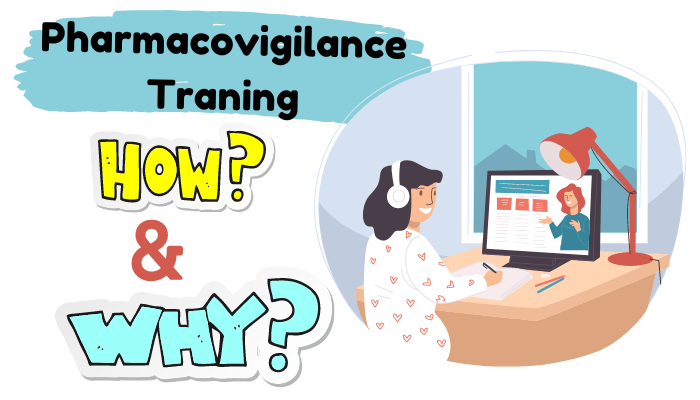The Importance of Pharmacovigilance: Ensuring Drug Safety and Patient Well-being
The Importance of Watching Out for Medicine Safety: Keeping Us Healthy
Introduction
In healthcare, making sure that patients are safe is super important. A big part of making this happen is keeping an eye on medicine safety, which in the medical world is known as “pharmacovigilance.” But what does that mean? It’s all about the science and work of spotting, understanding, and preventing any bad effects or problems related to medicine. Making sure medicine is safe isn’t just something companies check off a list. It affects millions of people all over the world. Pharmacovigilance is super important because it helps keep everyone healthy.
The Basics of Watching Medicine Safety
What is Pharmacovigilance?
Pharmacovigilance is a big part of healthcare that makes sure medicines are safe. It started after a big problem in the 1960s with a drug called thalidomide. Now it’s a smart and advanced field. The main goals are to check medicine safety, stop harm, help patients feel better, and make sure medicines are used safely.
Why It’s Important to Watch Medicine Safety
1. Spotting and stopping bad reactions to medicine is really important. These reactions can sometimes be very dangerous, and catching them early can save lives.
2. Making medicines work better for patients is also key. When medicine safety is checked often, doctors can update how they treat people, which directly helps patients.
3. By stopping medicine problems, we can save a lot of money on healthcare. If we avoid bad reactions to medicine, we have fewer hospital visits and less need for extra treatment.
How Pharmacovigilance Works
Steps in Watching Medicine Safety
– Spotting: Collecting information on how safe a medicine is. This can come from trials, reports from patients, or healthcare records.
– Assessing: Looking at the data to find patterns and reasons. It’s about finding what’s really important in all the information.
– Managing: Taking action to lower risks. This might mean changing how much of a medicine people take, adding warnings, or even stopping a drug from being sold.
– Telling People: Making sure doctors and patients know about any safety concerns, so everyone stays informed.
Tools and Technology Used
1. Big databases like WHO Vigibase are huge collections of drug safety info and very helpful.
2. Smart tools and artificial intelligence quickly check large amounts of data to find possible risks.
3. Health apps on mobile phones let people report and check problems instantly, making it easy for patients to speak up about issues.
Benefits of Watching Medicine Safety
– Better patient safety and quality of life. Watching medicine safety all the time means any potential risks are taken care of, keeping patients safe.
– More trust in healthcare systems. When everything is open and honest, patients and doctors can rely on the medicines they use.
– Helping to decide on approvals, changes, or stopping a drug. Pharmacovigilance info is critical for making these decisions.
– Helping develop safer medicines. Constant checking and feedback help make medicines better over time.
Challenges in Pharmacovigilance
Common Problems
1. Not enough people report bad reactions, which is a big problem. Many reactions aren’t noted, especially if they’re not severe.
2. Not enough resources in some countries make it hard to watch medicine safety well. There’s a lack of tools and skilled people.
3. Balancing making medicine quickly with checking it’s safe is tricky. Fast innovations can sometimes mean safety checks aren’t as thorough.
Ways to Solve Challenges
1. Teaching more healthcare professionals about this is important. Training leads to better reporting and understanding of pharmacovigilance.
2. Using technology can improve watching and reporting, especially where resources are low.
3. Working together across countries and with international groups can help share resources and knowledge to tackle global safety issues.
Real-Life Stories
Over the years, there have been major problems showing why we need strong pharmacovigilance systems:
1. The thalidomide issue in the 1960s caused many birth defects, making safety rules much stricter.
2. The recall of Vioxx in 2004 is another example, where heart risks weren’t noticed at first, causing harm and leading to its withdrawal.
3. Recently, checking the safety of COVID-19 vaccines in real-time was critical. It helped keep public trust and patient safety during a global health crisis.
Conclusion
Pharmacovigilance is a must-have part of modern healthcare. It makes sure medicines are safe and keeps patients well. Its role is huge as it quietly works to find, check, and lower risks with using medicines. As healthcare workers, partners, and patients, we all need to focus on pharmacovigilance. Getting better at it and keeping up with new ways to watch medicine safety means a safer future for everyone. Whether you’re new to healthcare or have been around a long time, knowing and using pharmacovigilance practices is vital. At Pharmacovigilance Foundations, we aim to inform and support people in making medicine safety a top priority.





